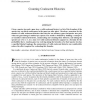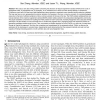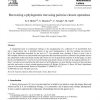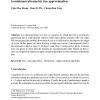JCT
2007
14 years 3 months ago
2007
Abstract. Simple families of increasing trees can be constructed from simply generated tree families, if one considers for every tree of size n all its increasing labellings, i.e.,...
JCB
2007
14 years 3 months ago
2007
Given a species tree and a gene tree, a valid coalescent history is a list of the branches of the species tree on which coalescences in the gene tree take place. I develop a recur...
TKDE
2008
14 years 3 months ago
2008
We study a new data mining problem concerning the discovery of frequent agreement subtrees (FASTs) from a set of phylogenetic trees. A phylogenetic tree, or phylogeny, is an unorde...
APPML
2005
14 years 3 months ago
2005
A fundamental task in evolutionary biology is the amalgamation of a collection P of leaf-labelled trees into a single parent tree. A desirable feature of any such amalgamation is ...
RSA
2006
14 years 3 months ago
2006
We study random cutting down of a rooted tree and show that the number of cuts is equal (in distribution) to the number of records in the tree when edges (or vertices) are assigned...
MT
2006
14 years 3 months ago
2006
Abstract. This paper describes an example-based machine translation (EBMT) method based on tree-string correspondence (TSC) and statistical generation. In this method, the translat...
NAR
2008
14 years 3 months ago
2008
Phylogenetic analyses are central to many research areas in biology and typically involve the identification of homologous sequences, their multiple alignment, the phylogenetic re...
ENTCS
2007
14 years 3 months ago
2007
This paper describes a prototypical system that combines several aspects of engagement as defined in (Naps et al. 2003) for the topic of tree and tree algorithm animations.
JCO
2006
14 years 3 months ago
2006
A k-decomposition of a tree is a process in which the tree is recursively partitioned into k edge-disjoint subtrees until each subtree contains only one edge. We investigated the p...
DAM
2007
14 years 3 months ago
2007
We study the problem of uniformly partitioning the edge set of a tree with n edges into k connected components, where k ≤ n. The objective is to minimize the ratio of the maximu...





